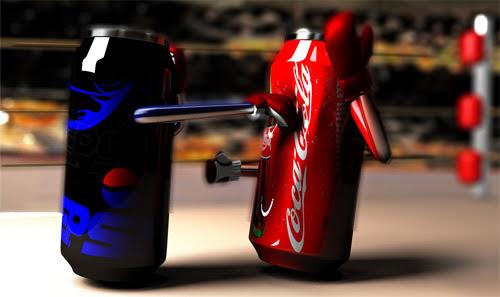Anyone can become a marketer these days. With so much how-to content on the internet you don’t even need an MBA to self-learn marketing, but you see there is one difference between good marketers and really good marketers. The latter amplify the effects of their marketing campaigns by factoring in customer psychology and behaviour into their strategy.
Everyone can do hard work; it is important to learn to do smart work, and so here are a few tips on how to use your customers’ psychology to influence them.
1. Give a larger-than-life perspective
Don’t tell me how your product can do this and that, tell me how it’s gonna change my life or even better tell me how it’s gonna change the world and you have my attention!
Humans are emotional beings and only when you trigger emotions in them, they form memories and thereby, a mental connection to the product.
Take for example companies like Dove which are advocating feminism and self-love, as a way to market themselves, and associate themselves to a bigger moral virtue. The next time you see a Dove product in store, it will trigger those emotions in you.
Companies like Nike and coca-cola have done that for years and so have effective governments. Infact, remember the don’t mess with texas campaign? One of the most effective cleanliness campaigns ever which leveraged the love of texans for their country (it is no different from a marketing campaign).
Takeaways:
- Humanize your product and service.
- Tell them why it’ll change their lives. Tell them that it will CERTAINLY, and DEFINITELY change their lives.

2. Build trust by exposing your flaws
Don’t try to paint the perfect picture. People are cynical, and trying to portray perfection is only going to trigger their alarm bells for possible deception. I still see ads on tv which say, use this soap and we guarantee 100% germ destruction and I am like, ‘yeah right!’
When you bare your flaws and expose your limitations, your audience will tend to believe you much quicker. Volkswagen used this tactic in one of this 1960’s ad campaigns, and it shocked the world.
“Lemon” ad copy starts: “This Volkswagen missed the boat. The chrome strip on the glove compartment is blemished, and must be replaced.” (source)
The campaign was a huge success to say the least.
I am not saying all of us should highlight the flaws in our products to market ourselves, but we must resist the urge to use terms like 100% guarantee, 100% results etc, as that will only trigger suspicion in your customers.
Takeaways:
- Don’t ever paint a perfect picture about your products. People don’t admire perfection. At Hiver, we strictly follow the ‘No’ rule, that is – once a customer walks in, the first thing we do is determine the fit and if we find that we don’t fit our customer, we tell them the same, instead of overselling our product.
- If you can flaunt your flaws with humour and sass. Do it.
3. Trigger emotions like fear and shock, before giving your solution to heighten the impact
When I say inducing fear and shock, I don’t mean using unethical scare tactics.
A great example is how listerine exaggerated a simple problem to get people’s attention. Listerine, when it first came into market sprayed across the term ‘chronic halitosis’ in all its ads. The term simply meant bad breath, but by using a scientific name for it, listerine was successful in scaring people into buying its product.
Here is an another example – Tell me, will a poster like this not stop you in your tracks, and ask you to reconsider your choices?
Takeaways:
- Adrenaline-pumping emotions like fear and shock are better attention catchers.
- Choose to tell your customers what you can prevent over what you can give.
4. Tackle competitors through comparison and/or by repositioning them
What do you do when your market space is overcrowded? How do you sneak into customer’s consciousness when it is already occupied? By repositioning your competitors – if you can’t attract your customers stronger than your competitor, alter your customers’ perspective towards your competitors.
Remember that funny uncola ad by 7 Up? It was a smart attempt at making the colas look less cool. The campaign was a huge success, not in thwarting the colas, but in creating a name for 7 Up. You would think that criticizing your competitors would promote a negative impression amongst the public, but no, the campaign on the contrary, made use of humour to remove any such negativity and altered the perspective of people towards their competitors.
Another way is to attack an entirely different market, for example for a while the diet coke directly competed with coffee, instead of other soft drinks. The campaign stated that diet coke is the perfect and healthier substitute for coffee. Instead of attacking the beverage industry, they attacked the coffee industry. I say, smart move!
Takeaways:
- Change your customer’s perspective towards your competitors through comparison and repositioning.
or
- Change the customer’s perspective towards your product let’s say, by positioning yourself in a new market.
5. Anchoring
Anchoring is one of the most fundamental concepts in consumer psychology that marketers tend to use.
Have your ever wanted to get those $100 trousers, but stopped yourself because it is way out of your budget? What will you do if the price goes down to $50 in a sale. Of course you would be delighted, and will tend to push yourself to buy it even if your usual shopping budget is only $25.
This is called the anchoring effect, wherein people tend to base decisions on the first piece of information they get. Even if the trousers are $25 above your usual budget, just because they are less than the initial price you will get tempted.
In the famous book Influence by Robert Cialdini, he says that if you want to convince someone give them two pieces of information – the first one, pretty bad and the second one, not so bad and you will have a higher chance of convincing them.
Takeaways:
- Remember that we’re always looking for something better than the jazz around us – we tend to think more in relative terms, rather than absolute.
- Anchor your customers’ expectations first and exceed those expectations by offering something a little better. It’s not a win-win, but it’s a relative win-win.
People have, for long, debated if marketing is a science or an art. Many say it’s both, and I concur.
Although creating a great marketing campaign is an art, maximizing the impact of a campaign/strategy is a science – a science that emphasizes on factoring in elements like consumer psychology.






